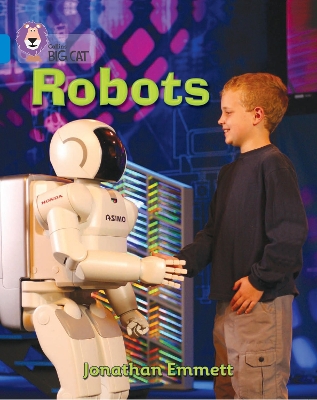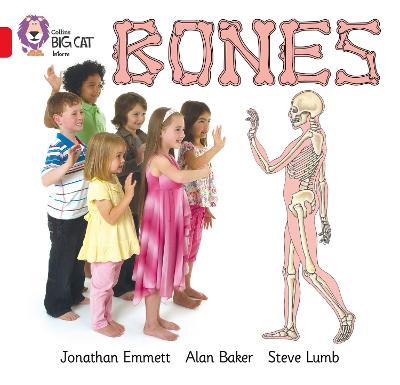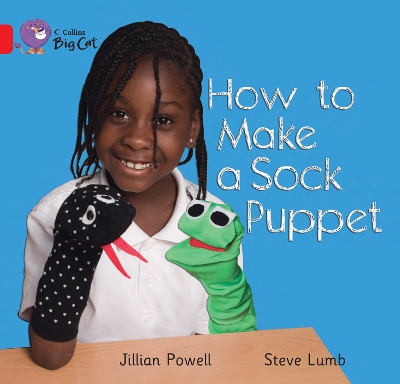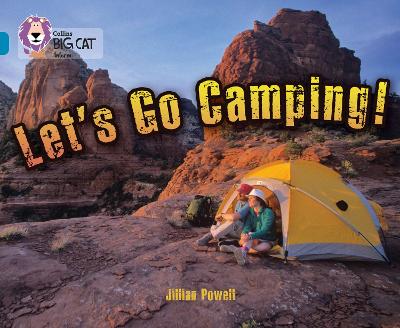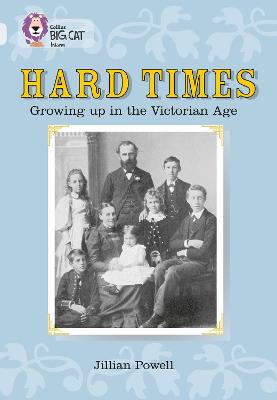Collins Big Cat
7 total works
A photographic non-fiction book that explains the many different types of robots and their uses. The report tells how robots help us in industry, security, and in exploring uninhabitable environments such as other planets, volcanoes, and the depths pf the ocean.
- Blue/Band 4 books offer longer, repeated patterns with
sequential events and integrated literary and natural language. - Text type – A non-chronological report.
- A labelled diagram on pages 14 and 15 shows the inner workings of a robot, providing the opportunity to further discuss the information.
- Curriculum link – Science: Ourselves
- This book has been levelled for Reading Recovery.
What bones have you got in your body? Where are they? Are they big or are they small? Find out all about the different bones in your body in this simple non-fiction report accompanied with photographs and drawings.
- Read B/Band 2B books offer simple but varied text with familiar objects and actions, combined with simple story development and a satisfying conclusion
- Text type: A simple information text.
- Pictures of children and a skeleton on pages 14-15 are labelled with all the bones covered in the book to show where they are in relation to the whole body.
- Curriculum links: Knowledge and Understanding of the World
Let's get creative and have fun! Get an old sock, some glue, marker pens and material and follow this simple instruction text to make your own cool frog or snake hand puppet. Photographically illustrated the lively, colourful images show each stage and each instruction clearly for children to follow.
- Red A/Band 2A books offer predictable text with familiar objects and actions, combined with simple story development.
- Text type: A simple instruction text.
- Photographs of each instruction on pages 14-15 help children to recap each instruction.
- Curriculum links: Creative Development
Have you ever been camping? Become an expert camper – find out how to read maps, set up camp, cook campfire food and even track wild-animals with this fun non-fiction information book. Stunning photographs and useful step-by-step drawings accompany the text.
- Topaz/Band 13 books offer longer and more demanding reads for children to investigate and evaluate.
- An information book.
- Pages 30 and 31 outline the 'Dos' and 'Don'ts' of camping, allowing readers to recap information from the book.
- Curriculum Links; Geography: Improving the Environment, Citizenship: Animals and Us
- This book has been quizzed for Accelerated Reader.
Imagine you were a child in Victorian times. What was your day like? What did you wear, eat and play with? Did you go to school, or out to work? Find out what life was like for children in this enthralling non-fiction book.
- Diamond/Band 17 books offer more complex, underlying themes to give opportunities for children to understand causes and points of view.
- A timeline on pages 54 and 55 help children to recap the main events of the Victorian era.
- Text type: A non-chronological report
- This book is paired with Moving Out a fiction story set in the past about a family in post-World-War-Two London deciding whether to move out to a New Town.
- Curriculum links: History: What was it like for children living in Victorian Britain.
- This book has been quizzed for Accelerated Reader.
Cooking can be fun and easy! Follow these simple photographic instructions to learn how to make a delicious, healthy pizza.
- Lilac/Band 0 books wordless that tell a story through pictures and are designed to develop understanding about how stories work.
- Text type: A wordless instruction text.
- Ideas for guided reading at the back of the book provide practical support and stimulating activities.
- Curriculum links: Physical Development
